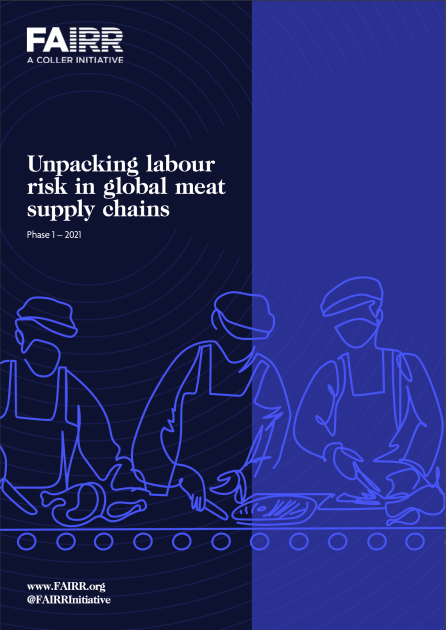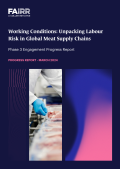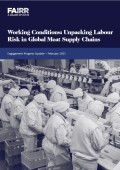Executive Summary
The pandemic has exposed the fragility of our global food system and the weakness of corporate policies which fail to protect the backbone of the industry – its workers. COVID-19 hit the meatpacking industry with force. High rates of contagion drove soaring absenteeism rates and caused tragic losses for workers and their families. Labour shortages intensified in North America and Europe and added to the pressure on remaining scarce labour to maintain production volumes. These events drove up health and safety risks, while plant closures caused production disruptions. The impact of COVID-19 clearly demonstrates the sector’s need for more robust workforce protections and greater recognition by companies in their policies, disclosures, and practices of the importance and significance of the worker voice in identifying risk within operations. As the recent US House of Representatives hearing on COVID-19 and the meatpacking industry showed, it is only just becoming clear how exposed the industry and its workers were to such a crisis. Measures must be taken to ensure greater protections for workers to strengthen the industry’s resilience in the long and short term.
As assessed in FAIRR’s Working Conditions collaborative investor engagement, workers’ ability to report risk is key to reducing negative social impacts and ensuring effective operations. This can be achieved by implementing health and safety measures and effective grievance mechanisms, supporting worker representation, engaging in collective bargaining, providing secure employment contracts, reporting on labour metrics to corporate boards, and consulting workers in the development of grievance channels, climate strategy, and automation. Companies now face a pivotal moment in recovering from the pandemic to set a new industry standard on labour. This report finds that meat-producing companies have greater oversight of labour risk than they report publicly, and the gaps in their disclosure raise serious concerns over how they assess labour metrics and their relations with the workforce. Economy-wide failures of existing business models that prioritise short-term returns over long-term sustainability call for innovative strategies that acknowledge the urgent need to embed the interests of workers as key stakeholders at the core of corporate mission statements and business relations. Through these strategies, strong labour relations and employee engagement will favour corporate success and mitigate labour risk.
Contextualising Conditions
In 2020, COVID-19’s disproportionate impact on workers in meat processing plants disrupted operations in leading producing markets and increased public scrutiny of existing health and safety practices, as well as the industry’s poor human capital management. As the sector adjusts to the pandemic, labour management strategies are not improving. Poor working conditions continue to intensify labour risks across the value chain. Addressing labour risk in meat production is strategic to the resilience of the world economy, global food security, domestic labour markets, and the sector’s financial stability. It is also a critical component of the transition towards a sustainable food system
The meat sector is over-reliant on human capital
“Labor is our number one challenge” – Donnie King, CEO, Tyson Foods
Industrial meat processing has transformed the activities of butchers into a series of repetitive, unskilled or semiskilled jobs on labour-intensive, mass-production disassembly lines. These jobs demand an ability to disassemble animal carcasses with subtle differences in shape and size, a task that existing technology cannot yet perform. Access to low-cost migrant labour has historically disincentivised investments in alternatives such as automation. Today’s meat processing plants rely heavily on human capital – for example, the US meat processing industry is three times more labour-intensive than the national manufacturing average – making the sector extremely sensitive to labour risk.



